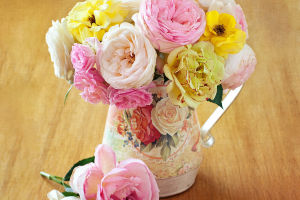Lavender is a stunning flower renowned for its captivating fragrance, widely utilized in perfumes, candles, and essential oils. Not only does it possess exquisite beauty, but it also boasts an array of remarkable medicinal and soothing properties.
With a history dating back centuries, lavender has been revered for its various uses.
Belonging to the mint family, lavender is native to the Mediterranean region. Its vibrant purple flowers and gray-green foliage create a striking color contrast, evoking a sense of tranquility and elegance.
Lavender thrives in diverse climates, enabling it to flourish across the globe. As a perennial plant, it can grace gardens with its growth and blossoming for an extended period.
Lavender encompasses a wide range of varieties, including Spanish lavender, English lavender, and many others. In fact, there are approximately 453 lavender varieties originating from different countries, each with its unique adaptability to various climatic conditions.
These varieties find applications in lavender-infused beverages and the production of essential oils.
Renowned for its aesthetic appeal, lavender is commonly used to enhance the beauty of gardens and yards. Its blossoms serve as a magnet for butterflies and bees, infusing the surroundings with vitality and liveliness. Furthermore, the beloved fragrance of lavender is harnessed in the creation of perfumes, soaps, candles, and other products.
Lavender pillows, filled with wild air-dried lavender and hollow fibers, emanate a delightful scent and possess properties that calm the mind, relax the body, and soothe emotions.
In folk medicine, lavender is recognized for its positive effects on pain relief, stroke recovery, and paralysis. Over time, lavender has transcended its traditional medicinal herb classification due to its enchanting aroma and captivating hue.
Certain lavender varieties of flowers and leaves are also utilized in culinary endeavors. Lavender flowers find their way into teas, pastries, ice creams, and other delectable creations, imparting a distinctive aroma and flavor.
However, it is crucial to note that not all lavender varieties are suitable for consumption, so it is important to verify the variety's suitability before incorporating it into culinary endeavors.
Lavender bouquets are frequently exchanged as gifts for blessings and celebrations, symbolizing happiness, well wishes, and blessings.
Furthermore, lavender possesses properties that promote mental and physical equilibrium, making it a symbol of harmony and balance. It serves as a gentle reminder for individuals to seek inner balance and foster harmony within their surroundings.
In European traditions, lavender has long been associated with love. Numerous love legends and folk customs revolve around lavender, and the Elizabethan era's renowned lyric poem, "Lavender Represents True Love," exemplifies this sentiment.
Lavender's floral language is "waiting for love." Just like the portrayal in the TV series "Lavender," lavender embodies subtle displays of love and unwavering commitment.


